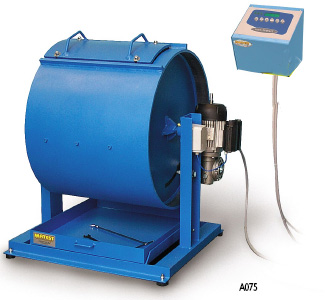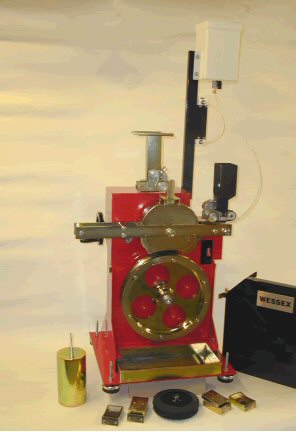HIGH FRICTION ROADS
HIGH FRICTION:
| Test | Procedure | Required Values* |
|---|---|---|
| Aggregate Gradation |
Sieve Analysis ASTM C 136 |
Florida DOT: 95% min. passing No. 6 sieve, 5% max passing No. 16 sieve |
| Aggregate Abrasion |
L.A. Abrasion Test ASTM C 131 |
Florida DOT: 10% max. South Carolina DOT: 20% max. |
| Accelerated Polishing Test |
ASTM E 660 European Standard: EN 1097-8 |
South Carolina DOT: 75 mm max. (ASTM E660) UK: PSV >70 |
*Note: Florida DOT and South Carolina DOT specifications are developmental specifications and should not be considered standard specifications for HFS.


| Property | Test Prodecure | Requirement* |
|---|---|---|
| Ultimate Tensile Strength | ASTM D 638 | Florida DOT: Minimum 2,800 psi |
| Compressive Strength | ASTM D 695 |
Minimum @ 3 hrs – 1,000@ 75 °F Minimum @ 24 hrs – 5,000 psi@ 75 °F Florida DOT: 1,600 psi min. |
| Elongation | ASTM D 638 | 30-70% @ 7 days |
| Shore Hardness | ASTM D 638 | Florida DOT: 70 min. |
| Abrasion Resistance | ASTM D 4060 | SCDOT: 500 cycles, CS17 |
| Gel Time | ASTM D 2471 | Florida DOT: 10 minutes min. |
| Water Absorption | ASTM D 570 | Florida DOT: Less than 0.25% |
| Viscosity |
ASTM D2393 Florida DOT: ISO 2555 |
7-25 poises Florida DOT: 3,000 Mpa min. |
| Bleed Test | Florida DOT: Swab test visual 7 days @ room temp. | Florida DOT: Little trace |
| Cure Rate | Florida DOT: Thin film @ 75 °F | Florida DOT: 3 hours max. |
| Peak Exothermic Temperature | Florida DOT: ASTM D 2471 | Florida DOT: 150 °F min. |
| Pot Life | ASTM C 881 | 15-45 min. @ 75 °F |
| Adhesion |
Virginia Test Method 92 ASTM D 4541 |
Minimum @ 24 hrs – 250 psi @ 75 °F |
*Note: Florida DOT and South Carolina DOT specifications are developmental specifications and should not be considered standard specifications for HFS.
Skid resistance, as defined by ASTM, is the ability of the pavement surface to prevent the loss of tire traction. Pavement skid resistance is generally quantified using either locked-wheel or fixed slip skid measurement devices which utilize standard tires for the measurements. Other stationary devices are also available for spot measurements of skid resistance. Skid Number (SN) and Skid Resistance Value (SRV) are the most common metrics for quantifying skid resistance. However, recent efforts to harmonize skid resistance values from different devices have resulted in the development of the International Friction Index (IFI), which provide a means to compare skid resistance valued between devices. Below are some of the types of equipment commonly used for measuring skid resistance:
According to the HAPAS Guidelines Document for the Assessment and Certification of High-Friction Surfacing for Highways from the British Board of Agrément, a high friction surface is described as “having a minimum skid resistance value (SRV) of 65 measured using the portable Skid-Resistance Pendulum Tester”.
| Test | Specification | Calculated Value |
|---|---|---|
| Pendulum Tester | ASTM E 303 | SRV, BPN |
|
Sideway-Force Coefficient Routine Investigation Machine (SCRIM®) |
In accordance with TRL Report 176: Appendix E and Road Research Laboratory Road Note 27 | SFC |
| Griptester | ASTM E 1844 (test tire specification) | GripNumber |
| Locked-Wheel Trailer | ASTM E 274 | SN/FN |
| Dynamic Friction Tester | ASTM E 1911 | Dynamic COF |
HFS systems can also be tested for texture depth and/or profile depth, primarily for quantifying macrotexture, using the following tests and equipment. Specifications for texture depth vary from agency to agency depending on the application. In general, a minimum mean texture depth (MTD) of 1-1.5 mm is required.
| Test | Specification | Type of Measurement | Value Reported |
|---|---|---|---|
| Circular Texture Meter (CTM) | ASTM E 2157 | Laser | Mean Profile Depth |
| Sand Patch Method | ASTM E 965 | Volumetric | Mean Texture Depth |
| Robotex | ISO 13473 | Laser | Mean Profile Depth |
While a reduction in tire-pavement noise is not the primary reason for installing HFS, the macrotexture properties of HFS can help to reduce tire-pavement noise on certain pavement surfaces.
The following table describes types of noise testing commonly used to measure tire-pavement noise.
| Test | Specification | Short Description |
|---|---|---|
| Statistical Pass-by Method (SPB) | ISO 11819-1 | Type of wayside testing, where a microphone is located on the side of the roadway in a fixed location. Measures hundreds of individial vehicles. |
| Close-Proximity (CPX) | Draft ISO 11819-2 | Fixed microphones are enclosed in a sound-proof trailer and are located near the test tire. |
| On-Board Sound Intensity | (OBSI) TP 76-08 | Fixed microphone located near the tire, measures sound pressure levels as test vehicle is in motion. |
In addition to monitoring skid resistance, texture depth, and tire-pavement noise testing over time, monitoring the overall performance of the HFS system over time provides valuable information on the durability of the material.
While HFS product performance tests are still maturing in the U.S., the British Board of Agrement HAPAS process includes a number of simulative and conditioning tests for HFS products. Some of these tests are performed on the finished product in-situ, and others are performed in the laboratory on core samples removed from the finished product.
In addition to skid resistance and texture depth testing, on-site performance tests include:
Additional laboratory “torture” tests of HFS systems are also conducted to evaluate the durability of the products. These tests include:
CONTACT US

The Transtec Group engineers the best pavements in the world. Have a pavement problem? Give us a call—we’re good listeners.
© 2025 | The Transtec Group, Inc. | Privacy Policy